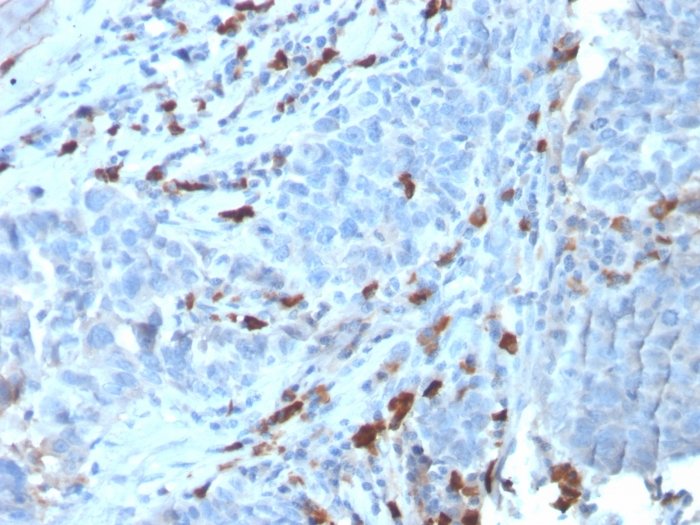
The Rabbit Anti-Human IgM µ Chain (FITC Conjugated) Antibody is a highly specific fluorescent reagent designed for the detection of human IgM heavy chain (µ chain) in immunological assays. IgM is the first immunoglobulin expressed during B-cell development and plays a critical role in primary immune responses, complement activation, and antigen recognition. This antibody, conjugated to fluorescein isothiocyanate (FITC), provides a bright and stable fluorescent signal, making it ideal for applications such as flow cytometry, immunofluorescence (IF), and fluorescence microscopy. In clinical and research settings, this antibody is widely used to identify and quantify IgM-positive B lymphocytes and to study B-cell maturation, immunodeficiencies, autoimmune disorders, and hematologic malignancies. It is particularly valuable in flow cytometric immunophenotyping, where it enables accurate characterization of B-cell subsets and detection of abnormal lymphoid populations. The FITC conjugation ensures direct detection without secondary reagents, reducing background and simplifying experimental workflows. Validated for use in peripheral blood, bone marrow, lymphoid tissues, and cell suspensions, the Rabbit Anti-Human IgM µ Chain (FITC) Antibody provides high specificity with minimal cross-reactivity to other immunoglobulin classes. Each lot undergoes rigorous quality control for sensitivity, specificity, and fluorescence intensity, ensuring reproducible results across experiments. With its proven performance and clinical relevance, the Rabbit Anti-Human IgM µ Chain (FITC) Antibody is an indispensable tool for immunologists, hematologists, and biomedical researchers investigating B-cell biology, immune response profiling, diagnostic immunology, and translational research in autoimmune and lymphoproliferative disorders.
Rabbit
Polyclonal
IgG
IHC-P
Human
Immunology, Immunology > Adaptive Immunology
Store as concentrated solution. Centrifuge briefly prior to opening vial. Store at 4ºC. Protect from light.
IgM isolated from the serum of a patient with Waldenstorm’s macroglobulinaemia.